Insulin Vial Types: What Do You Know?
Are you feeling overwhelmed by your diabetes diagnosis? Are you wondering why there are so many types of insulin? How do they provide relief?
Insulin is the main medication for managing symptoms of diabetes. But with so many types of this preparation, people often get confused. Each type has its own special trait and certain mechanisms of action to manage glycemic levels in the blood.
If you’re a diabetic person, caregiver of a diabetic individual, or just someone curious about insulin, in this article, “Insulin Vial Types: What Do You Know?”, we’ll dive into the fascinating world of insulin vials and unlock the secrets within these small containers. So, let’s learn together!
1.What is an insulin vial?
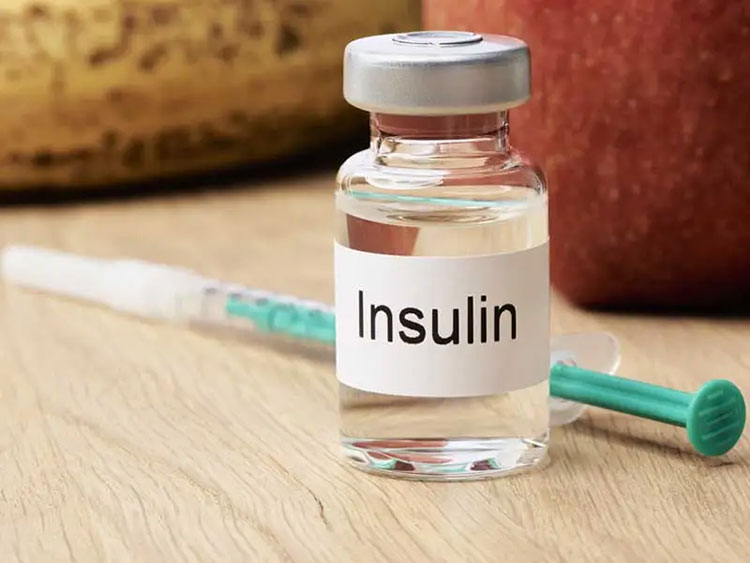
Insulin Vial- Picture Courtesy: Diabetes Voice
Diabetic type 1 patients and sometimes diabetic type 2 patients require outside insulin, as their bodies can’t produce enough insulin to fulfill their metabolic needs, or don’t work right in response to naturally produced insulin.
Whereas, you can say an insulin vial is a little cylindrical container, in general made with glass and in some cases medical-grade plastic, and is a widely used vehicle to hold the injectable liquid form of insulin. These vials often come in U-100 concentration, which means that every ml has 100 units of insulin.
2.Can you enlist various insulin vial types?
Nowadays, you can have numerous types of insulin vials. They differ from each other on the basis of on how quickly they provide relief in individuals, when they peak, or how long their effect duration is. Now, let’s have an overview of various insulin vial types:
Intermediate-Acting Insulin
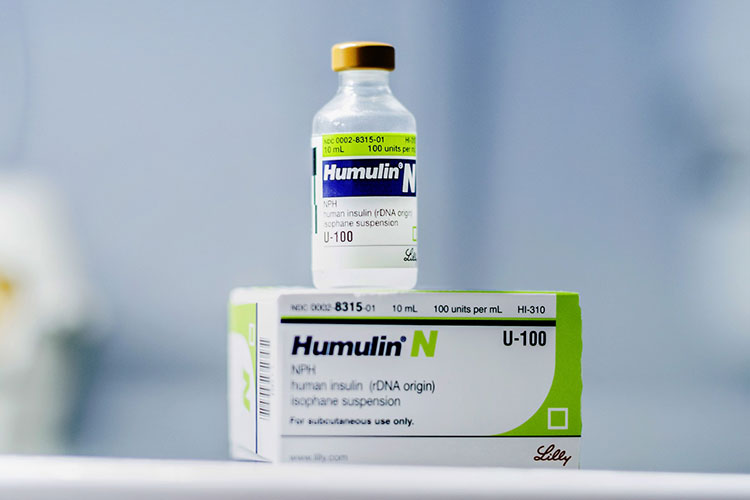
Intermediate-Acting Insulin
In contrast to other insulin types, intermediate insulin has a more cloudy type of look. The reason? Presence of protamine in this formulation and as such it also goes by the terms of NPH (Neutral Protamine Hagedorn) or basal insulin (older generation).
Protamine compound slows down the uptake of intermediate-acting insulin in your blood circulation. Hence, it provides gradual and steady release over many hours and will satisfy your insulin need for half a day or overnight, so you’ve to take insulin two times a day. You’ve to gently roll it before administration, as it distributes the suspension more uniformly.
Keep in mind to have dinner at night, when on this insulin type, because otherwise you might have a higher chance of low glucose level at nighttime.
Rapid-Acting Insulin
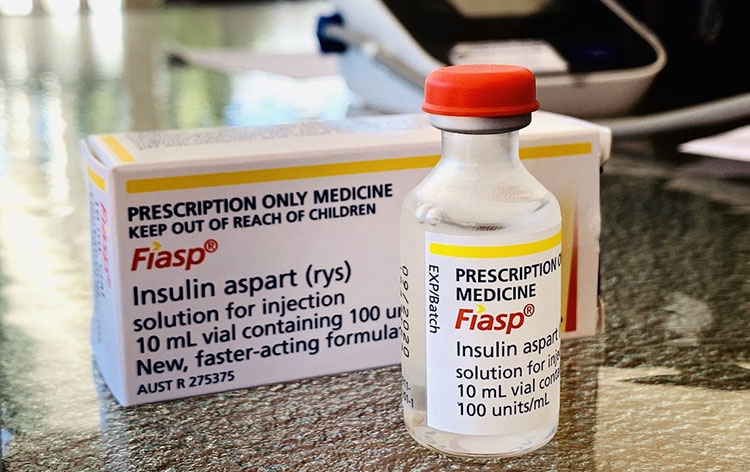
Rapid-Acting Insulin- Picture courtesy: My Health Explained
You can find other terms for rapid-acting insulin, which are mealtime or bolus insulin. It comes in the form of a clear solution and is injected usually before food intake or immediately after finishing your meal. In case you’re wondering about its action, it is quite simple.
Rapid-acting insulin mimics a spike of natural insulin after you’ve taken a meal, and subsequently, it is rapidly distributed in the blood after injection and assists in reducing and controlling sugar spikes post-meal.
People for have flexible meal timings or variability in their diets often use this insulin vial type because of its quick action and elimination from the body.
Short-Acting Insulin
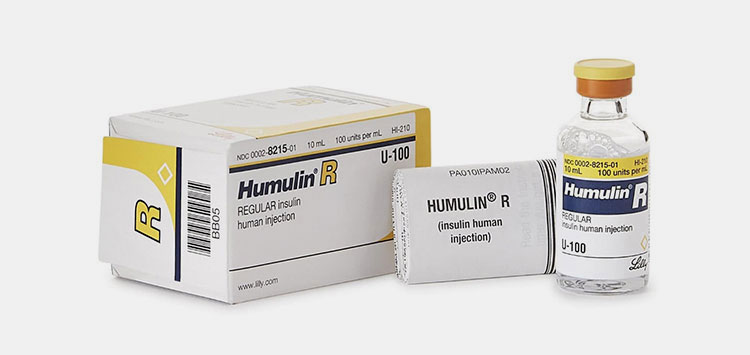
Short-Acting Insulin
You may use other names for this insulin vial type- regular insulin or standard insulin. Instead of quickly delivering its effects, it takes a while to kick in, unlike rapid-acting insulin.
Just like rapid-acting insulin, you still take short-acting insulin approximately 30 minutes before grabbing a bite. In this way, you allow this insulin some time to begin working in your body. Within 30-60 minutes after its injection, you’ll notice a decline in your sugar numbers.
Remember to plan your meal time accordingly if you’re on short-acting insulin type because having unpredictability in eating times and delaying meals every so often results in hypoglycemia (low blood sugar).
Generally, you’ll see hospitals using this insulin vial type in emergency situations.
Premixed Insulin

Premixed Insulin
It is also called biphasic insulin. As the name suggests, pre-mixed insulin vial type is already packed in mixed form and is a combination insulin type, made from mixing short-acting and intermediate-acting insulin or rapid-acting and intermediate-acting insulin.
It is beneficial for folks who need insulin coverage to rapidly rise in glucose levels after meals or to manage sugar levels between meals or at bedtime. Pre-mixed insulin is advantageous for you because it offers you the therapeutic effectiveness of both bolus (meal-time) and basal (background) insulin in a single shot.
You’ve to inject this insulin vial type two times a day- before breakfast and after dinner. If you’re one of those patients who favor fewer injections and simple dosing regimens, then you’d surely benefit from it.
Long-Acting Insulin
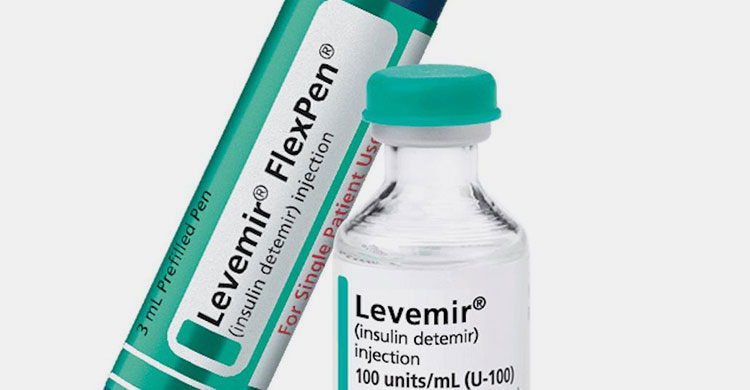
Long-Acting Insulin- Picture courtesy: Pharmaphore
It is also a type of basal insulin, but belongs to the modern class of basal insulin, in contrast to intermediate insulin. Its absorption rate is slower than the intermediate-insulin type, but its working action is almost similar.
Long-acting insulin releases a gradual background level of insulin, like the level normally maintained in the blood by natural pancreatic secretion. There is no peak or spike in the activity of the long-acting insulin vial type, subsequently, it offers a more predictable impact over an extended period.
It is useful in the sense that you’ve to take it once a day. But remember to take it at the same time every day. It is great for individuals who want minimal insulin injections per day.
Ultra-Long-Acting Insulin
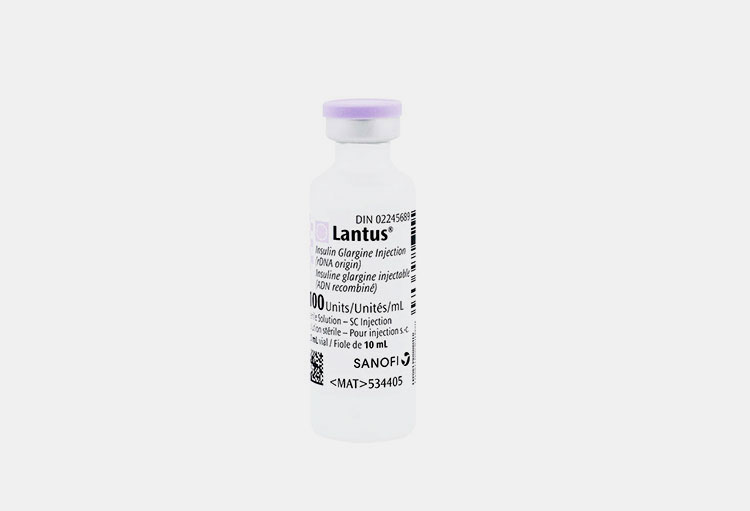
Ultra-Long-Acting Insulin
It is also known as next-gen basal insulin. As the name suggests, this insulin type has an even longer duration of action. Ultra-long-acting insulin starts working in around 1-2 hours, but unlike the long-acting insulin, it maintains a more consistent and steady level of insulin in the blood by slowly releasing this hormone over 36-42 hours.
It has a minimal or flat peak and, hence, aims to attain a more regular and stable glucose level. With this insulin type, you have quite a flexible daily dosing schedule. Moreover, due to its extended action, you’ve minimal risk of low glycemic levels, especially at nighttime.
Here is a comparison chart for common insulin vial types, highlighting the differences between their duration of action and peak times:
| Insulin Vial Types | Time frame for the Onset of Action | Time Of Maximum Effect | Duration of its Action |
| Short-Acting | 30- 60 min. | 2 to 3 hrs. | 3 to 6 hrs. |
| Rapid-Acting | ~ 15 min. | 1 hr. | 2 to 4 hrs. |
| Pre-Mixed | 5 to 60 min. | Its peak time is based on its component insulin types | 10 to 16 hrs. |
| Intermediate-Acting | 2 to 4 hrs. | 4 to 12 hrs. | 12 to 18 hrs. |
| Long-Acting | 1 to 2 hrs. | Its peak resembles a plateau | Almost 24 hrs. |
| Ultra-Long-Acting Insulin | 6 hrs. | Has very flat or no peaks | Up to 36 to 42 hrs. |
3.Can you give some storing tips for insulin vial types?
Yes, insulin is a very delicate product. The way you store it makes or breaks how well it works. Here’s what you need to know about its storage.
For Unopened Vials?
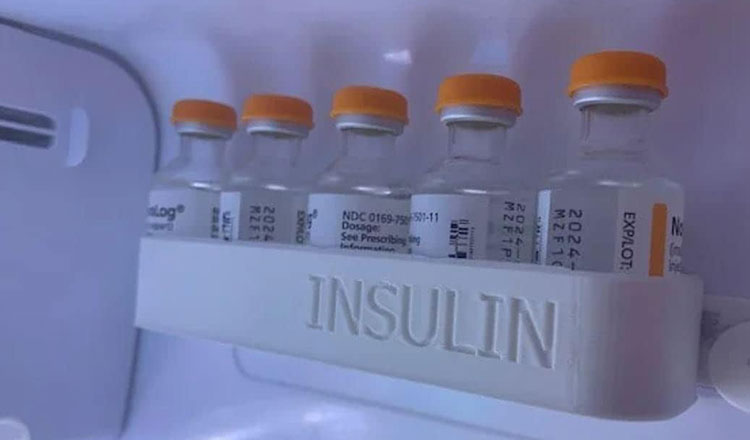
Storage of Open Insulin Vials
Place them in your fridge. But don’t go for your freezer or at the back of the fridge where things tend to freeze by surprise. Your storing temperature for unsealed vials could be between 36°F to 46°F (2°C to 8°C).
For Opened Vials
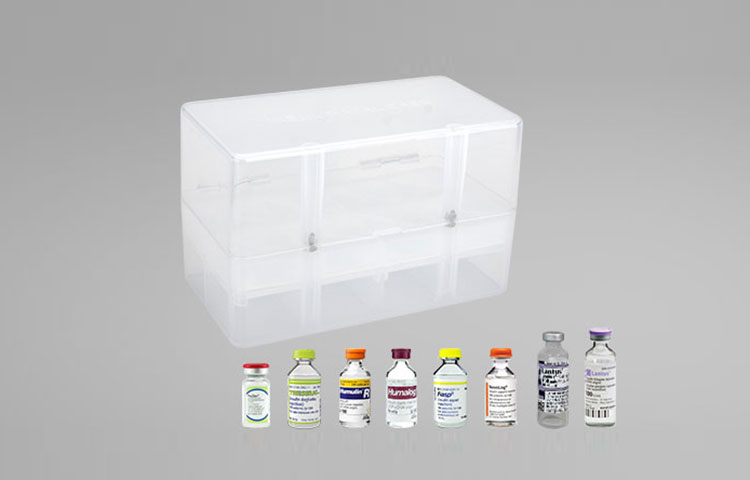
Storage of Open Insulin Vials- Picture Courtesy: GoSupp
Not sure how to store your insulin after it's opened? Once you’ve cracked that vial, you’ve got options. Keep it at room temperature (59°F to 86°F) if you like. Don’t keep open vial in fridge since cold insulin injection may hurt a little bit.
Just don’t forget—it’s got a shelf life of 4 weeks. No matter how much is left, toss it after that. It's not worth the risk!
4.Are there any tips for injecting insulin vial types?
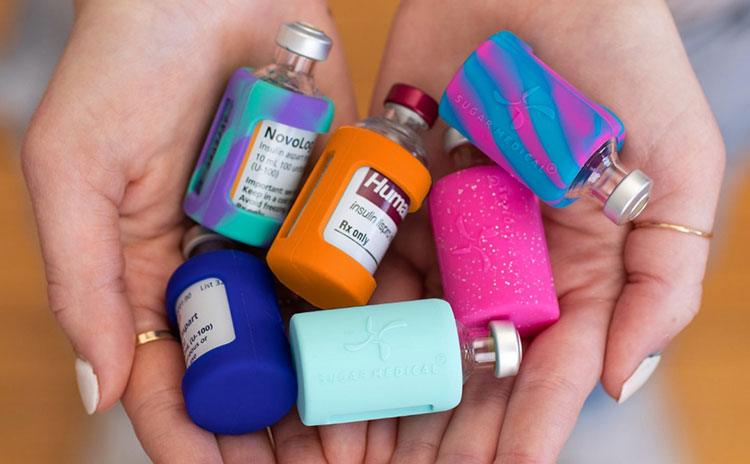
Insulin Vial Safety- Picture Courtesy: Sugar Medical
Let’s be real- safety always comes first when you’re using insulin vials of any kind. It is not optional but is essential. Some useful tips are penned below.
| Clear or Cloudy | Before injecting insulin, take a good look at it. Many of your insulin vial types are completely clear. So, make sure there are no floating pieces, small bits, visible clumps, white particles, or crystals of any kind in your vials. If you get intermediate-acting insulins, well, they come with a cloudy look. So it is imperative that you gently roll and invert them for about 10 minutes each, till you see your insulin formulation turning milky white. |
| Clean Needle, Every Time | Use a fresh needle or pen for injection every time- no ifs and buts. And of course, don’t forget to wipe the rubber stopper of your insulin vial with an alcohol swab before putting the needle inside it. |
| Check That Date | Insulin doesn’t last forever. Subsequently, check the back label of the insulin vial before every use. If you notice that the expiry date has passed or the vial smells weird, then trust your guts and throw it out. |
| No Shaking, no Bubbles | Are you seeing tiny bubbles in your vials? It happens when you forcefully shake vials. So don’t agitate them before use, as this messes up your insulin dose. |
5.How to decide which insulin vial types are best for you?
Nowadays, you’ll likely see people surfing the internet to find the right insulin type for their sugar treatment. However, before going on the internet, first you must consult your physician because they prescribe you the most suitable insulin vial type by looking at your symptoms, eating schedule, and activity levels. However, here are some useful factors that normally influence the selection of the best insulin vial type for you:
Diabetes Type

Type of Diabetes- Picture Courtesy: Business Insider
Have type 1 diabetes? Then your health physicians normally give you a combination of rapid-acting and long-acting (basal-bolus) insulin treatment plans. On the other hand, if you’re a type 2 diabetic person, then long-acting or premixed insulin is prescribed to you. For women with gestational diabetes, doctors review their needs and may suggest short-acting or intermediate-acting insulin.
Daily Routine

Daily Routine- Diabetes UK
Do you work according to a preplanned schedule? Premixed insulin could be perfect for you. Conversely, if you’re juggling odd hours, then a combination of rapid-acting and long-acting insulin vial types offers you more freedom.
Eating Habits

Eating Habits- Picture Courtesy: Health Coach Kait
If you eat regular meals, premixed insulin might do the trick. But if your eating schedule’s all over the place, rapid-acting insulin can keep up.
Activity Levels

Activity level- Picture Courtesy: Inside Tracker
Individuals with more busy routines are at higher risk of hypoglycemia, so, in this case, long-acting or ultra-long-acting insulins are more appropriate. They offer more stable coverage without resulting in glucose level drops in the blood.
Age

Insulin and Children- Picture Courtesy: Kids Health
Diabetic type 1 is quite common in both kids and grown-ups alike. To combat it, kids need insulin doses that are accurate and easily changed. That’s why they often get a double-pack combo of rapid-acting + long-acting insulin. As complex insulin regimens are troublesome for older adults to adhere to, they’re generally offered simpler premixed alternatives.
Conclusion
Insulin treatment isn’t like one shoe size fits all. Like other meds, insulin vials come in many forms. Each one performs its job differently and stays active for different periods. Your body needs, personal lifestyle, and doctor's counsel matter the most when picking out the right insulin vial type for you. However, when using insulin, you must store it properly, inject it safely, and follow a proper administration schedule and your doctor's advice. Got more questions about insulin vial types? Reach out to AIPAK Engineering from anywhere in the world. We’ve got your back!
Don't forget to share this post!
CONTACT US
Tell us your raw material and project budget to get quotations within 24 hours.
WhatsApp Us: +86 181 7101 8586
 Tell us your material or budget, we'll reply you ASAP within 24 hours
Tell us your material or budget, we'll reply you ASAP within 24 hours
